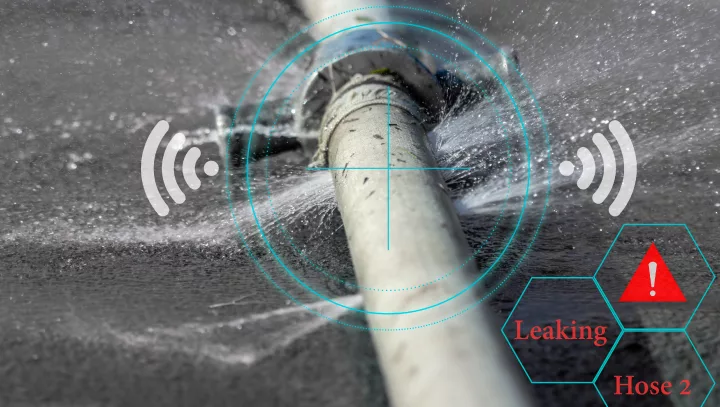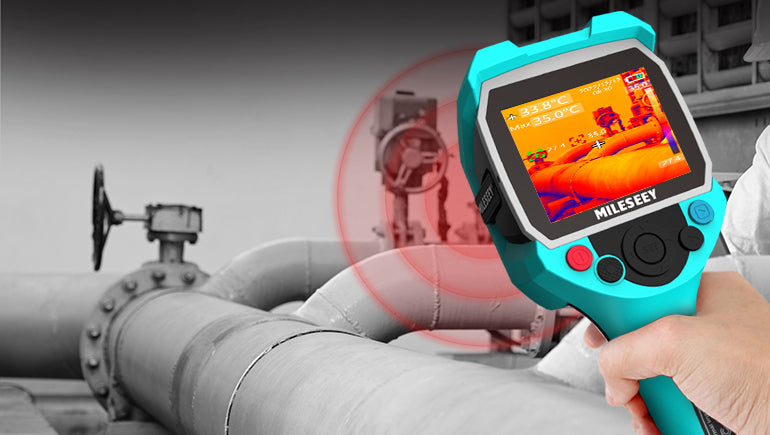Water Leak Detection: Exactly How to Determine and Take Care Of Leaks Prior To They Trigger Damage
Water Leak Detection: Exactly How to Determine and Take Care Of Leaks Prior To They Trigger Damage
Blog Article
Cutting-edge Solutions for Early Discovery of Water Leaks in Buildings and Infrastructure
As the honesty of buildings and infrastructure is extremely important, the difficulty of very early detection of water leakages has stimulated innovative options that promise to change the method we guard against possible damages. From advanced leakage detection innovations to the release of IoT sensors for real-time surveillance, the landscape of leak avoidance is evolving quickly. Equipment learning algorithms supply a glimpse into the future of leakage prediction, while thermal imaging provides a non-intrusive method for pinpointing surprise leaks. Automated water flow evaluation systems are improving how leakages are identified and attended to, leading the way for a proactive method to water leakage detection. Each of these services holds the key to making certain the reliability and durability of our developed setting, motivating a change in the direction of a more sustainable and efficient future.
Advanced Leakage Discovery Technologies
Advanced leakage discovery innovations, furnished with advanced sensors and formulas, play a critical role in quickly determining and determining water leaks in various settings. Electro-magnetic sensors can determine changes in electro-magnetic fields triggered by water, offering yet one more layer of leakage detection capacity.

IoT Sensors for Real-Time Monitoring
In the realm of contemporary water leakage discovery, the integration of IoT sensors for real-time tracking stands for a crucial advancement in improving positive leakage discovery capacities. These sensors provide constant surveillance of water supply, providing real-time data on water flow prices, stress variants, and temperature adjustments. By leveraging IoT technology, these sensors can find also the tiniest anomalies in water usage patterns, allowing early identification of prospective leaks prior to they intensify right into major problems.
IoT sensors transfer data to a centralized platform, where advanced formulas assess the details and create informs or notices when irregularities are found. This real-time tracking ability enables homeowner or facility managers to promptly resolve leakages, lessening water damage, reducing repair prices, and saving water resources.
Furthermore, IoT sensing units can be incorporated with building management systems, permitting automatic reactions to spotted leaks, such as turning off water shutoffs or activating pumps to mitigate the influence of leakages. In general, the execution of IoT sensing units for real-time monitoring significantly boosts the effectiveness and effectiveness of water leakage detection in structures and facilities.
Machine Understanding Algorithms for Leak Forecast

One trick advantage of using machine understanding for leakage prediction is its capacity to constantly learn and improve its precision in time. As even more data is collected next page and fed right into the algorithm, it can improve its forecasts and adapt to altering conditions, inevitably boosting the reliability of leakage detection systems.
In addition, artificial intelligence formulas can assist in identifying refined signs of leaks that might go undetected by standard tracking approaches. water leak detection. By assessing complicated information sets in real-time, these formulas can offer very early warnings and informs, allowing for timely treatment and preventive upkeep to minimize prospective water damages and associated expenses
Making Use Of Thermal Imaging for Leak Detection
Thermal imaging modern technology provides an appealing strategy for finding water leakages in various systems and facilities. By making use of infrared radiation and temperature level variances, thermal imaging cams can identify covert leaks that are not conveniently noticeable to the naked eye. When water leaves from pipelines or frameworks, it often changes the temperature of the surrounding location, developing temperature level differentials that thermal cameras can capture. These temperature irregularities are after that translated into visible images, highlighting the precise place of the leakage.
Among the crucial advantages of thermal imaging for leak detection is its non-intrusive nature. Unlike conventional techniques that might need getting into walls or floors to locate leaks, thermal imaging allows for non-destructive testing. This not only saves time and reduces costs but also lessens interruption to the building or infrastructure being assessed. Furthermore, thermal imaging can rapidly scan large locations, supplying a detailed summary of potential leakage resources in a timely manner. Overall, making use of thermal imaging modern technology improves the effectiveness and accuracy of water leakage detection, making it an important tool for maintaining the integrity of buildings and facilities.
Automated Water Flow Evaluation Systems
Just how can automated water circulation analysis systems transform the detection and administration of leaks in different systems and facilities? Automated water circulation analysis systems offer an aggressive strategy to leakage detection by continually monitoring water flow prices and patterns. read the article By establishing standard information, these systems can rapidly recognize discrepancies that may suggest a leakage, enabling timely treatment to avoid considerable damage.
These systems use innovative algorithms to examine real-time information and provide instant informs when abnormalities are discovered, permitting swift action to be taken. Furthermore, computerized water circulation analysis systems can be integrated with building administration systems or IoT systems, boosting why not try these out overall efficiency and enabling remote tracking capabilities.
Additionally, the information gathered by these systems can be made use of for predictive maintenance purposes, helping to determine possible weak points in the infrastructure prior to leaks occur. Overall, the implementation of automated water circulation evaluation systems can dramatically enhance leak detection and administration methods, ultimately leading to set you back financial savings, minimized water waste, and enhanced sustainability in buildings and framework.

Final Thought
Finally, the assimilation of innovative leakage discovery technologies, IoT sensors, machine discovering formulas, thermal imaging, and computerized water circulation analysis systems supplies cutting-edge remedies for very early discovery of water leakages in buildings and infrastructure. These technologies enable real-time monitoring, prediction of leakages, and reliable discovery techniques to avoid water damages and waste. Carrying out these options can assist in preserving the integrity and sustainability of water systems in numerous setups.
Report this page